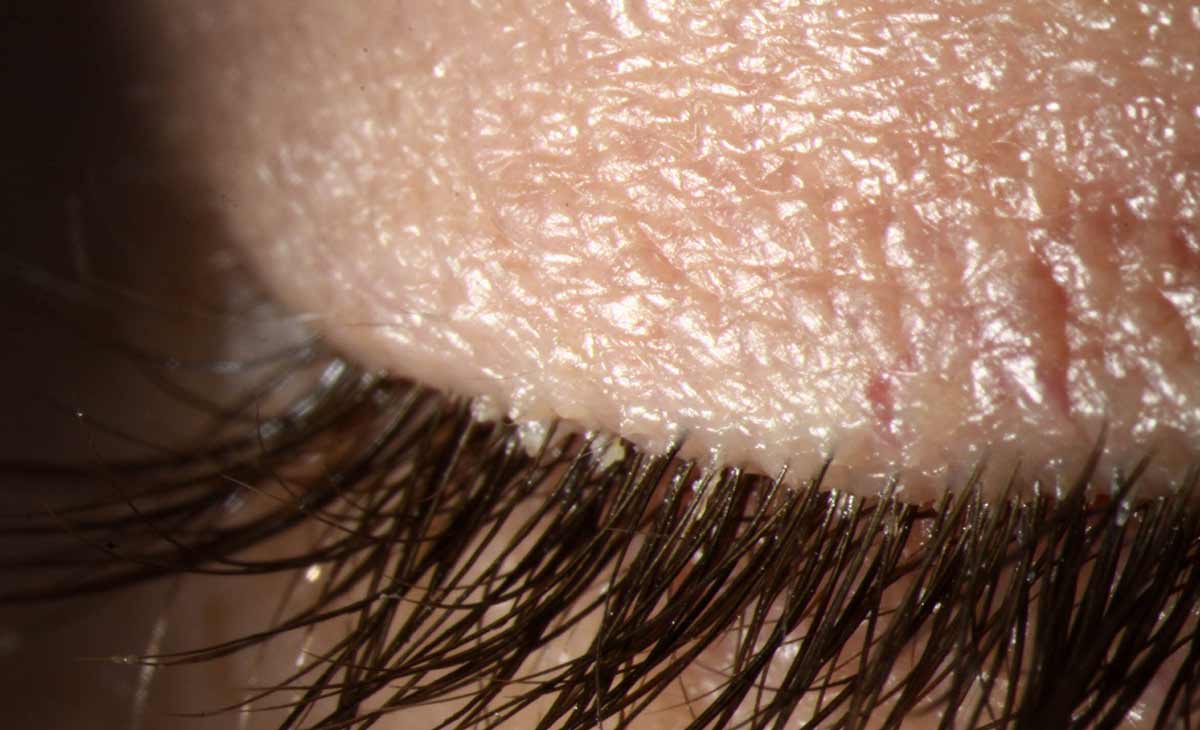 |
Ocular surface disease experts in a recent panel agreed on key signs and symptoms and effective examination strategies to best recognize Demodex blepharitis; however, they didn’t agree on all aspects of treatment. Photo: Chris Sindt, OD. Click image to enlarge. |
A panel of 12 ocular surface disease experts recently convened to form a consensus about the diagnosis, treatment, pathophysiology and signs and symptoms of Demodex blepharitis (DB) as part of the Demodex Expert Panel on Treatment and Eyelid Health. While clinicians shared the same view on most of these topics, the group did not reach a consensus about the best treatment or severity grading technique. Results of the project were recently published in the British journal Eye.
Using a modified Delphi panel process, the researchers administered three online surveys to each of the 12 practitioners, consisting of scaled, open-ended, true/false and multiple-choice questions. For questions that used a 1-9 Likert scale, a consensus was defined as median scores of 7-9 and 1-3. For all other questions, a consensus was achieved when at least eight out of 12 panelists agreed.
The panel reached a consensus on the following statements about Demodex blepharitis:
- DB condition is chronic (n=11).
- It is recurrent (n=12).
- The condition is often misdiagnosed (n=12).
- Inflammation is a key result (n=12).
- Collarettes (cylindrical dandruff) are the most common sign (n=10).
- Itching is the most common symptom (n=12).
- DB may be diagnosed based on collarettes, mites and/or patient symptoms (n=10).
- Conjunctival injection is common (median score: 7; range: 3-8).
- Tear breakup time is impacted by the condition (n=12).
- Rosacea has a strong association with DB (n=11) and is a risk factor of DB (n=10). It was also the most-cited systemic condition seen in cases of Demodex blepharitis (n=9).
- DB affects patients’ quality of life (median score: 7, range: 6-8).
Regarding the diagnosis of DB, the panel agreed that slit lamp examination is the most common method and that the visualization of mites is not required for diagnosis. As for severity grading, while 11 of 12 experts agreed this is important and clinically useful, there was no consensus about a specific scale.
The panel agreed that restoring balance to the ocular ecology is the key to managing Demodex infestation (median score: 8, range: 5-9) and that mechanical intervention such as lid scrubs and blepharoexfoliation is an important aspect of treatment (n=12). However, experts did not agree on the best method of treating these patients. The researchers noted in their paper, “Of the management options for DB available at the time of this panel, the group was about evenly split between blepharoexfoliation and tea tree oil as their primary strategy.”
Nevertheless, the group did unanimously agree that a decision tree accounting for clinical signs and patient symptoms is the best approach to treating blepharitis. Ten of 12 also reported that heat, warm compresses and steam-based and radiant heat devices are minimally, marginally or not useful.
Due to the lack of consensus on treatment and grading methods for DB, the research team planned an additional panel to see whether experts can reach an agreement on effective management strategies.
“Increased awareness of DB in the eyecare community will raise the level of care received by patients with blepharitis and offer some a more targeted treatment strategy and better clinical outcomes,” the researchers concluded.
Ayres BD, Donnenfeld E, Farid M, et al. Clinical diagnosis and management of Demodex blepharitis: the Demodex Expert Panel on Treatment and Eyelid Health (DEPTH). Eye. March 29, 2023. [Epub ahead of print]. |


